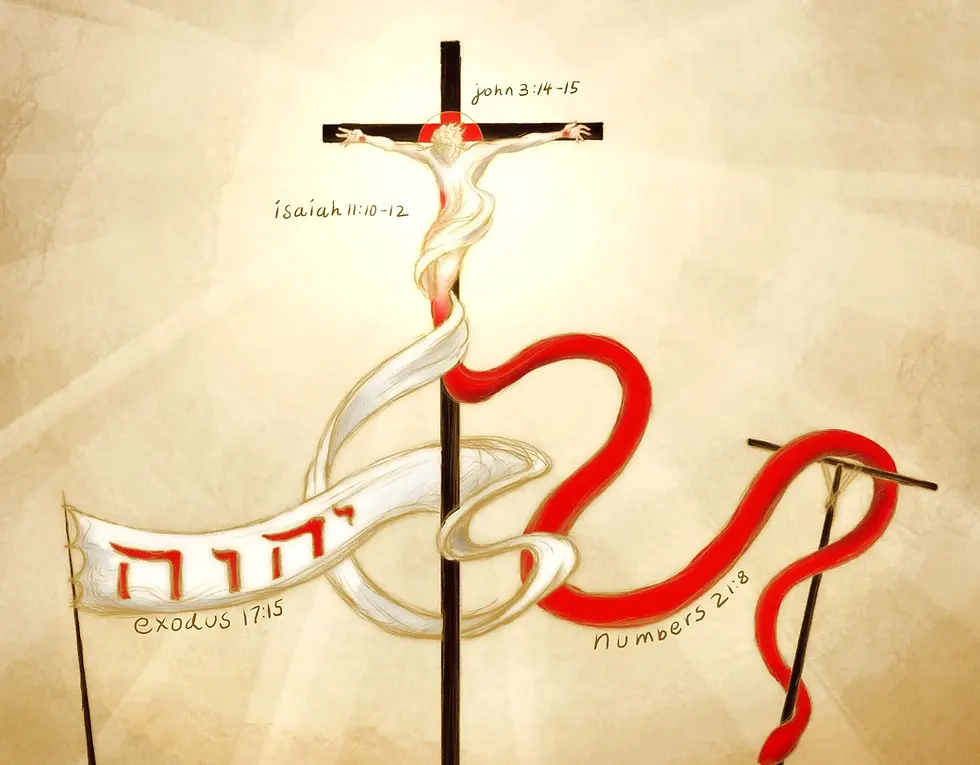FROM FAITH (NOUN) TO FAITHING (VERB)
- Charles
- 12 août 2023
- 4 min de lecture
Reflections for the Nineteenth Sunday in Ordinary Time: 1 Kings 19:9a, 11-13a, Romans 9:1-5, Matthew 14:22-33

Is faith a noun or a verb? When understood as a noun, faith becomes something that is held (Heb 4:14), possessed (1 John 1:5), lost and found (Matthew 10:39) or received (1 Timothy 1:16). We objectify it in formulas, dogmas, and categories and enter into debates to defend its purity, authority, and ‘true’ meaning. Faithing, understood as a verb, initiates us into a permanent process of believing and trusting in someone (John 3:16), actively working out (Philippians 2:12) ways to pursue it (1 Timothy 6:11) and in the process striving to mature in it (Hebrew 6:1). Faithing enables us to become seekers and pilgrims, walking the path of discipleship. The readings of this Sunday call us to this exciting path of conversion from the understanding of faith as a noun to the dynamic process of ‘faithing’; from being ‘owners’ of faith to seekers of faith. As Pope Benedict xvi said, “We do not possess the truth, the truth possesses us: Christ… who is holding us securely on the path of our quest for knowledge.”
The Gospel narrates the dramatic episode of Jesus walking on the water, the disciples holding on to the boats out of fear for their lives, and Jesus saving a sinking Peter. As Steve Argue (Fuller Youth Institute) observes, It is curious to realise that there has been only one attempt to recreate this extraordinary gospel scene in a painting (Conrad Witz in 1444). No painting or stained-glass window immortalizes this event in any cathedral or basilica. Biblical Scholar NT Wright has an interesting proposition. He opines perhaps devout artists avoided it because it seemed to show up the great apostle in a bad light. Which cathedral would want to depict the rock of the Church sinking? Peter’s sinking, in the faith (noun) perspective, represents a failure since it seems a ‘loss’ of his faith.
In the faithing (verb) perspective, however, the failure of Peter acquires a new meaning and significance. In the midst of an overwhelming storm, Peter the fisherman realises that the boat (a fisherman’s most reliable possession) is not going to be enough and so abandons it. Responding to the voice of Jesus, he steps out, away from the familiar, his comfort zone, to step into the unknown, trusting in just one thing: the voice of his master inviting him, "Come." Halfway through, his eyes wander. He shifts his focus from his master to the scary waves tossed by the heavy wind. When he begins to sink, he cries out, “Lord, save me”, again trusting his life into his master’s hands. Jesus rebukes him for his failure, but he must have certainly been proud of him that he dared to take the step!

Peter’s short walk on the sea reveals five key stages in the journey from faith to faithing: 1. He leaves his most reliable possession; 2. He steps out of his comfort zone to the unfamiliar; 3. He leaves the hesitant crowd behind, taking the initiative to be a leader, daring to take the first step; 4. He begins to conquer the roughness of the sea in his walk on the water towards Jesus; 5. When anxiety cripples his enthusiasm, he grasps the hands of his master extended to lift him up. Our journey to faithing involves following the model of Peter:
1. We are called to leave our most treasured false securities behind (Don't take anything along on your trip: Luke 9:3).
2. We are challenged to step out of the comfort of an excessively-institutionalised Church (Whoever does not carry the cross and follow me cannot be my disciple: Luke 14:27).
3. As witnessed in the Second Reading, Paul takes a similar leap out of the comfort zone of his own kindred to follow Christ.
4. We are invited to pursue creative synodal paths of discipleship in our contemporary world, walking over the forces of darkness and sin (Then the spirit of the LORD will possess you, and you will be in a prophetic frenzy along with them and be turned into a different person: 1 Samuel 10:6).
5. And when we happen to stumble, we are to open our eyes and hearts to discover and hold firm the extended arms of our master, the unfailing companion of our faithing journey (I am with you to save you and deliver you, says the LORD: Jeremiah 15:20). He constant accompaniment is a gentle whisper that accompanies us on our path to faithing, as it was for Elijah in the First Reading.

Faith is not merely an intellectual assent to definitions and principles but a dynamic and permanent pilgrimage of faithing. Numerous saints have ventured on this faithing path: Mother Teresa left Loretto convent heeding a call within her call in 1948. On 12th March 1977, after the assassination of his friend Rutilio Grande, Oscar Romero walked out of his comfort zone to walk with his people of El Salvador. In 1536, during the Plague of Milan, Charles Borromeo walked out of his bishop’s house to visit the victims. In 1206, Francis of Assisi dismounted his horse to embrace a leper by the wayside. In May 1873, Father Damien dared to enter the isolated settlement at Kalaupapa in his brother Auguste’s place to attend to the physical, spiritual, and emotional needs of 600 lepers. After 16 years of ministry, he died of the very disease he went to fight. It is now time for you to pursue your own unique path of this conversion from faith to faithing. So, leave, step out, dare, walk, and hold on, your master accompanies you!




Commentaires